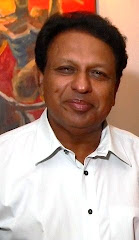Inaugural
Remarks by Former Ambassador T.P.Sreenivasan at the Seminar on Technology
Enabled Education at the Chinmaya Institute of Technology at Kannur
Oct
20, 2014
I
am grateful to Dr.K.R.Srivathsan and his colleagues for organizing this timely
seminar on technology-enabled education. This is a matter of high priority for
the Kerala State Higher Education Council, which has set up a Committee on
IT@Colleges, of which Dr.K.R.Srivathsan is a leading member. The Committee has a
two-fold agenda. The first is to assess the IT assets that our educational
institutions have to enable them to make optimum use of the different platforms
available and to provide additional facilities to them. The second is to design
the necessary content to facilitate the use of the platforms in accordance with
the syllabi of our universities. I hope that the present seminar will provide
the necessary inputs to our Committee. As is well known, the key to effective
use of technology in education is the design.
A
year ago, the KSHEC organized an International Meet on Transnational Education
and issued a Thiruvananthapuram Declaration, which emphasized, among other
things, the need to popularize MOOCS in the state to fill the gap between the
knowledge of the teachers and advanced knowledge, which is freely available in
cyberspace. We faced some criticism from high places, which pointed out that
India did not have either the connectivity or even the electricity to use
MOOCS. What we had suggested was not to replace traditional education with MOOCS,
but to use MOOCS as tools to supplement classroom education. Today, however,
there is recognition of the central role of MOOCS in higher education. The
President, the Prime Minister and the MHRD Minister have spoken of MOOCS as an
essential tool. Dubbed as SWAYAM, (Study of Webs of Active learning for Young
aspiring Minds) MOOCS have been generated in India with the involvement of UC
Berkley and IIT Mumbai.
In
our own way, we have incorporated MOOCS in our teachers training programmes and
held several workshops. Together with the University of North Carolina, the
Mahatma Gandhi University has held a MOOCS programme for University students.
Since we propose to move rapidly in this direction, we need to create the
necessary content to suit our curricula.
Distance
learning is not entirely new and different forms of distance learning have
existed for long. Educational films were produced as early as 1910 and Thomas
Edison said in 1913 that there is no branch of human knowledge, which cannot be
taught with motion pictures. Technology has transformed education in the last
ten years and in the next ten years, it will reach unprecedented levels of
innovation. India needs to catch up with these developments to keep our higher
education relevant, competitive and efficient. Technology and education can
promote each other, if they are used with reason and vision.
The
variety of learning tools available can be used to enable the teachers and the
students to use online resources and to develop research skills. Flipped classrooms
have proved effective and technology is particularly suited for Math, which is
fundamental to the growth of technology. Unless our universities specialize in
research and create knowledge, rather than gather information, we can never
reach the world-class levels of education we aspire to. We do not have
world-class universities in India not because they are poor, but because the
criteria used are applicable more for research universities, not teaching
universities.
Some
say that universities, the way we know them, will disappear with the growth of
technology. I do not subscribe to this view. Learning cannot be imparted by
machine alone. Interaction with teachers and peers are extremely important to
embellish education. Resources available in cyberspace should be used with
discretion and on the basis of mentoring by teachers.
Nobody
can be enthusiastic about technology without being skeptical at the same time.
We cannot take effective technology for granted even in the advanced countries.
Failure of technology has resulted in heavy losses, not to speak of the
embarrassment it causes to technologists. I have seen technology failure in
seemingly minor technologies even in MIT and NASA. Once I was with Ambassador
(later President) K.R.Narayanan at MIT and when he stood up to speak, the
microphone failed. Ambassador Narayanan said that if it had happened in his village,
it would be called “third world technology”, but since this is MIT, we can only
call it “system failure!” On another occasion, when Kalpana Chawla was about to
take off on her first shuttle mission, I was told I could greet her from the
NASA headquarters. The system failed and later, we discovered that someone had
unplugged the device under the table! If such things can occur in MIT and NASA,
how can we rely on technology in the conditions that exist in our universities?
The answer, of course, lies in the mastery of man over the machine. Needless to
say, we have to reach higher levels of technology to use it uninterruptedly on
the education scene.
With
these words, may I inaugurate the Seminar and wish it every success? We have a major
stake in your success as we propose to use your conclusions in reforming
education in Kerala.
Thank
you.

